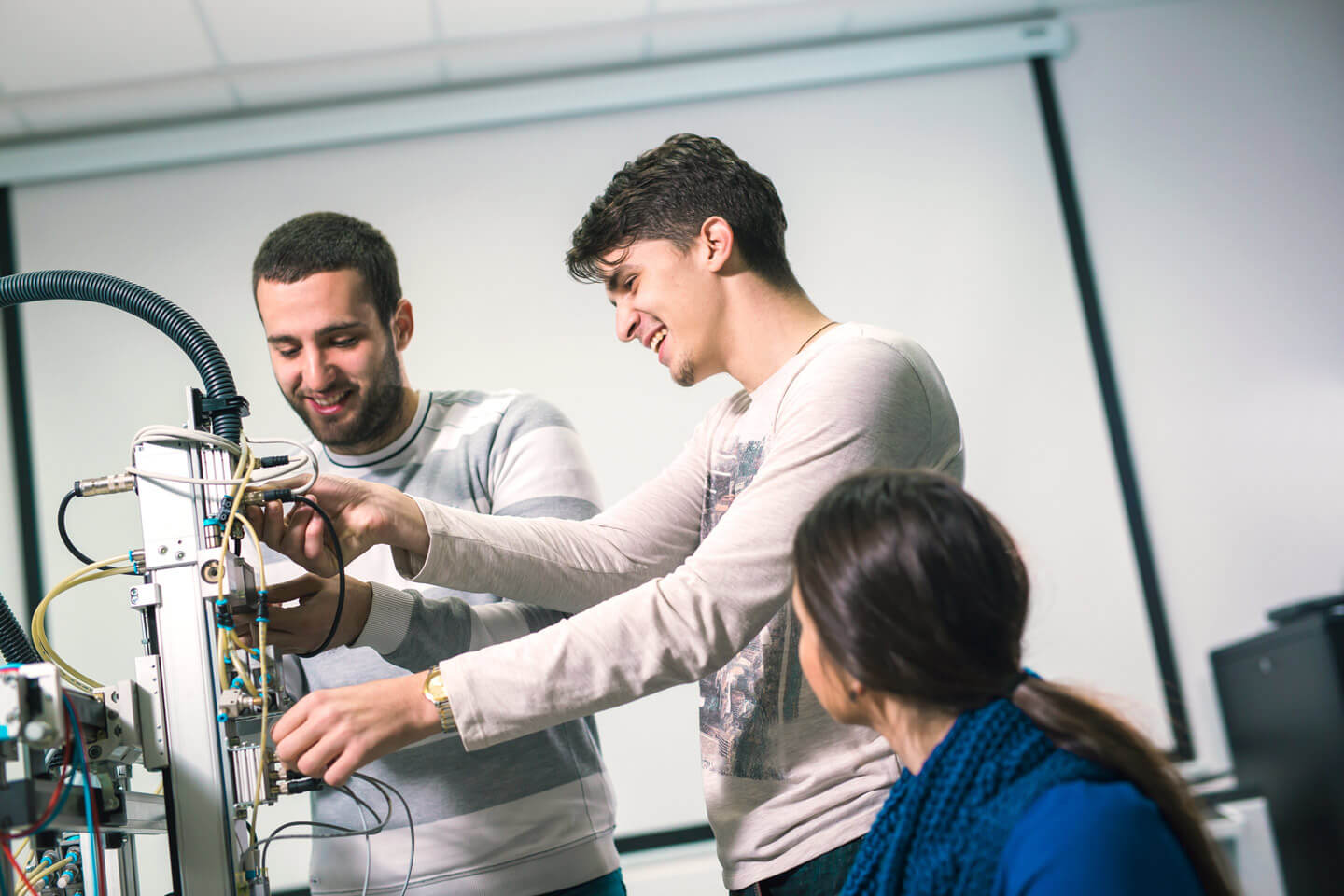How Virginia Beach City Public Schools Increased the Rigor of Its Engineering, Architecture, and Manufacturing CTE Program with a Single Online Resource
Preparing students for careers with a robust program in engineering, architecture, and manufacturing design
Virginia Beach City Public Schools (VBCPS) takes career and technical education (CTE) seriously. At the high school level, students have five pathways and 99 courses to choose from.
The district even has an Advanced Technology Center where its high school students can take architecture, engineering, and manufacturing courses, among other STEM topics, to earn college credits.
Offering career-ready courses to students is important to the community largely because of the region’s booming shipyard industry. It boasts some of the largest shipyards in the country so finding skilled workers who know their way around design, drafting, and manufacturing software is key to the local economy.
While most students from the district’s CTE programs pursue degrees in higher education, many can transition directly to the workforce thanks to the career-ready education they receive.
At VBCPS, instructors cumulatively teach SOLIDWORKS, AutoCAD, Inventor, Fusion 360, Revit, Onshape, Tinkercad, and SketchUp in the engineering, architecture, and manufacturing courses.

Challenged by an expanding curriculum, an instructor and his students looked for a solution.
Preparing students for college- and career-ready skills is a worthy cause. However, when instructors are teaching several disciplines and multiple CAD, CAM, and BIM software, it quickly becomes challenging — and sometimes impossible — to do it successfully without any added resources.
This became a reality for one teacher at the Advanced Technology Center.
Mack Stevens II has been teaching a wide variety of engineering courses for two decades including: 2D CAD, Engineering Drawing, Materials, Introduction to Engineering, and Advanced Engineering. In his Advanced Engineering course, he needed to introduce students to SOLIDWORKS for the first time.
However, Stevens didn’t have much experience with SOLIDWORKS, which made teaching it difficult. He explains, “I had very little to teach from. I had SOLIDWORKS Help Files, scraps of YouTube videos, and a few basic booklets. The help files were my best resource at that time.”
When one of Stevens’ students was searching for better ways to learn SOLIDWORKS, he found SolidProfessor, an online learning platform for teaching — and learning — engineering, architecture, and manufacturing design.
To help make teaching rigorous design and drafting courses possible for every instructor at VBCPS, Stevens approached the district’s CTE Coordinator Dr. Charles Hurd to request that they integrate the online learning platform into their program.
Dr. Hurd agreed to give SolidProfessor for Schools a test run — and as Stevens puts it, “we haven’t looked back”.
SolidProfessor is an online learning platform with more than 400 courses, exercises, and tests in the most popular CAD, CAM, BIM software, and design methods. With a SolidProfessor for Schools membership, teachers can access the platform’s curriculum, instructor and reporting tools, and a dedicated customer success rep. Teachers can spend less time lesson-planning and more time helping students one-on-one with an all-in-one resource.
CHECK IT OUT: Explore SolidProfessor’s library of 400+ courses covering topics in CAD, CAM, and BIM.
Integrating an online learning platform into existing curriculum gives instructors more classroom flexibility.
Integrating SolidProfessor into VBCPS’s Engineering, Architecture, and Manufacturing CTE Program allowed its instructors to transform the way they teach their students.
Stevens was able to flip his classroom. At home, students take SolidProfessor’s online lessons Stevens assigned for the day. Then, during class time, students apply what they learned by working on exercises and projects.
With the flipped classroom model “I can concentrate my efforts on students who need more help with the basics, while introducing the more advanced topics to my four overachievers without slowing anyone down,” says Stevens.

But the flipped classroom model isn’t right for every instructor or classroom scenario. For example, Stevens’ colleague Elizabeth Jones, the architecture and engineering instructor at Kempsville High School, VBCPS prefers a traditional model.
In Jones’ classroom, she uses SolidProfessor lessons as part of her course instruction. She explains, “students go through SolidProfessor’s video lessons during class, and I often assign them SolidProfessor’s practice exercises as homework.”
KEEP READING: How to Use SolidProfessor in Traditional and Flipped Classroom Models
Making instructors lives easier with a large library, intuitive instructor tools, and more.
What sets SolidProfessor apart from other learning platforms is the instructor tools. Jones’ favorite part is how “adding and creating classes in SolidProfessor is extremely intuitive.”
One of the other benefits that’s made teaching easier for Jones is the fact that SolidProfessor has courses for multiple versions of a software program. Whether schools have access to SOLIDWORKS 2020 or 2016, SolidProfessor has courses for that. This flexibility has been key for Jones’ classroom: “My school’s computer lab has outdated computers that can’t support the newest versions of AutoCAD, Inventor, or Revit. With SolidProfessor, I can assign my students courses that cover older versions.”
And for Stevens, the reporting tools have been a difference-maker in identifying which students need support: “SolidProfessor allows teachers to see who is excelling and who is falling behind. I can use the data to help reinforce participation.”
He’s also been able to use SolidProfessor to build a learning community. “Many times when I can’t help a student right away because I’m busy with another one, they’ll ask each other for help. By the time I get to the student, they’ll say ‘Oh, Mary helped me with that!’ And when Stevens asks how Mary knew what to do, “the answer is usually ‘I learned it or looked it up on SolidProfessor’.”

Stevens has even been able to use SolidProfessor for his own professional development saying, “Occasionally, when I run across a problem I haven’t seen before, a new feature I’m not familiar with, or a new software I need to learn, my go-to resource is SolidProfessor.”
Students can prove they’re prepared for what’s next by earning Technical Certificates.
At the end of each SolidProfessor course, teachers can assign their students the comprehension test. If a student passes the exam with a 70% or higher, they’ll earn a Technical Certificate in that topic.
“My students are able to show competency by earning SolidProfessor Technical Certificates,” explains Jones.
Stevens adds, “SolidProfessor’s Technical Certificates are great for my students’ portfolio. They can share their certifications with colleges and can use them to get internships or job interviews.”
Both Jones and Stevens feel confident their students are getting the education they need to be successful after graduation with SolidProfessor. Stevens says, “We have professional engineers come in and they’re really impressed by my students. College students will even come in and say they aren’t getting this type of training at their school.”
























